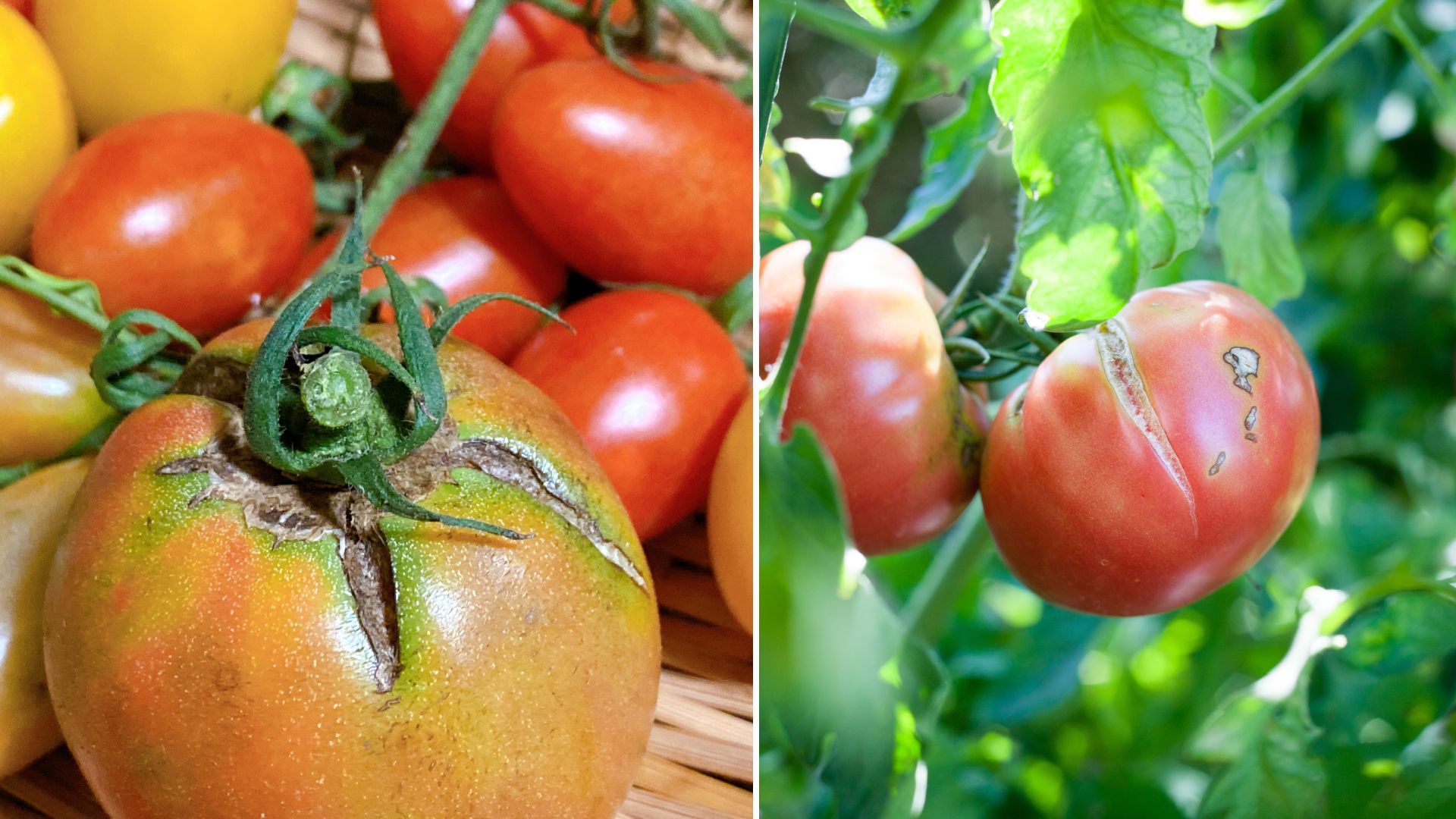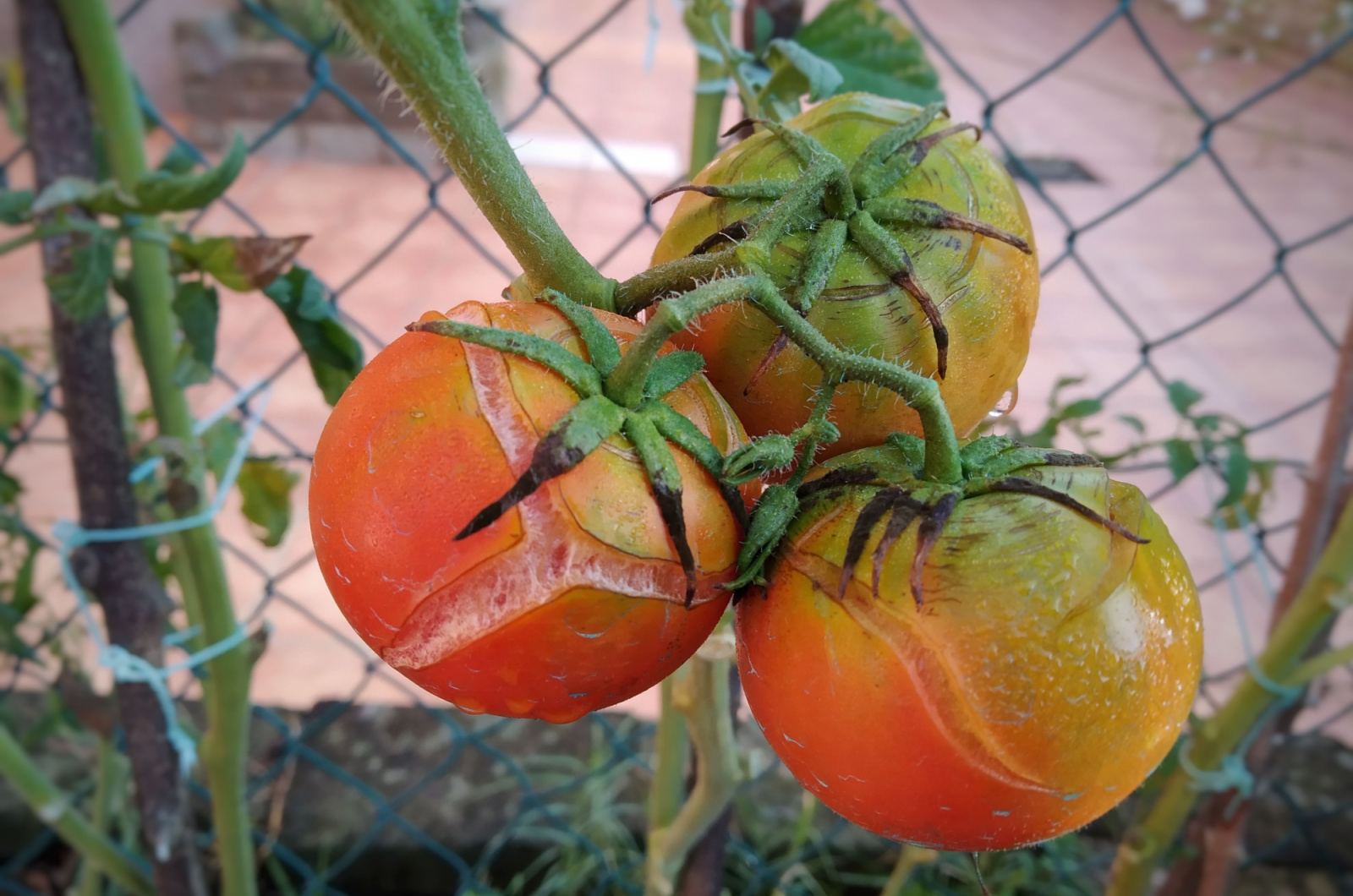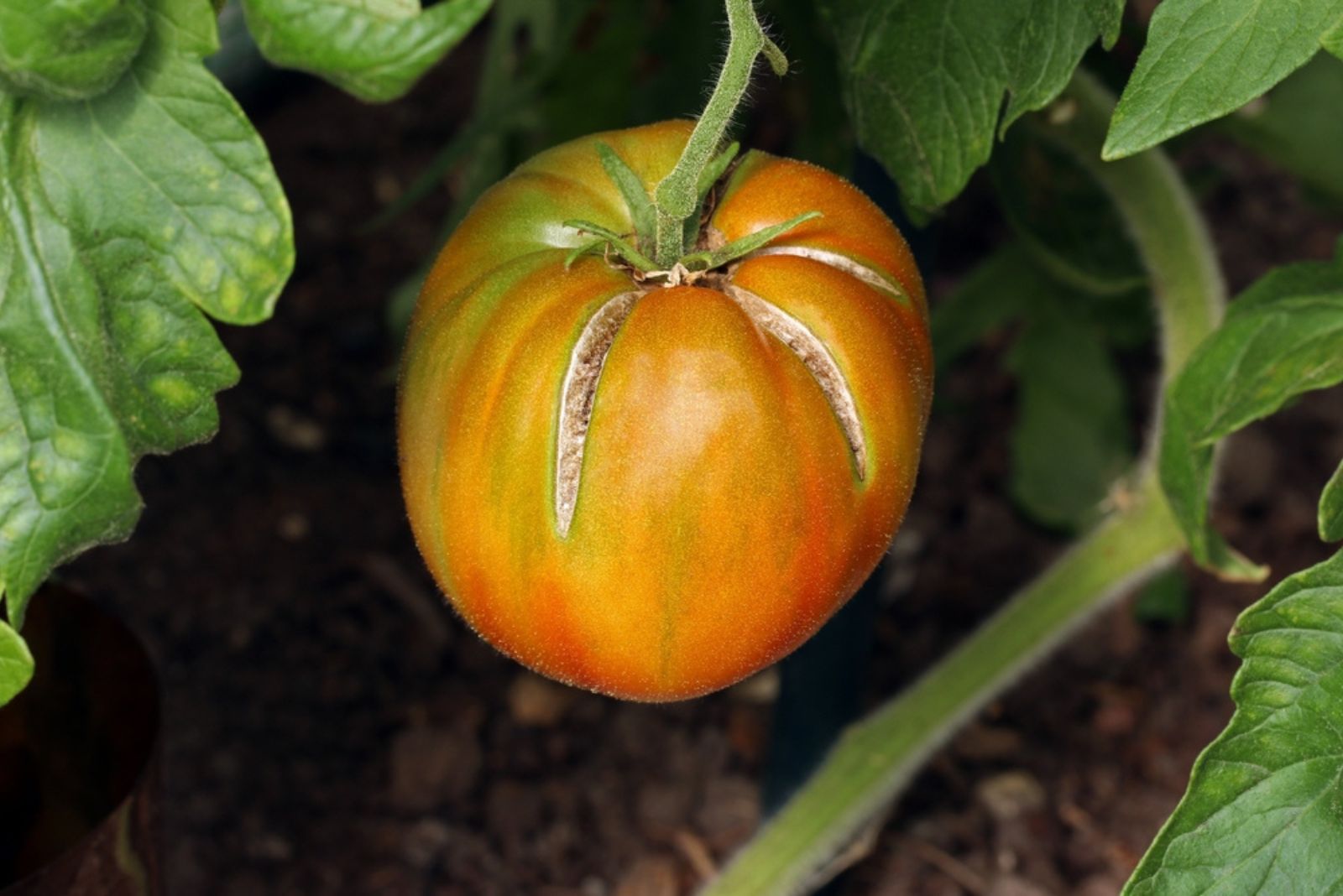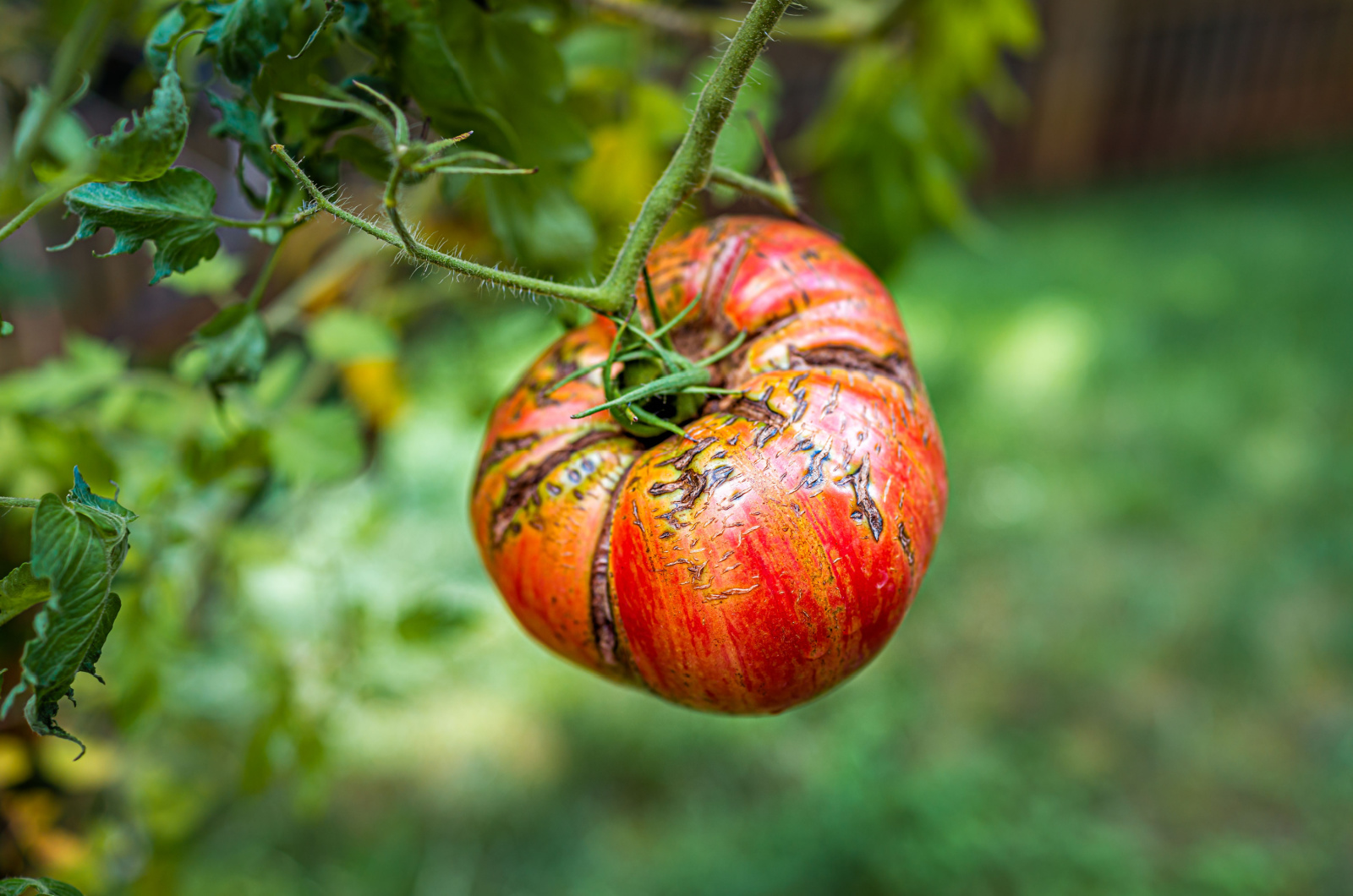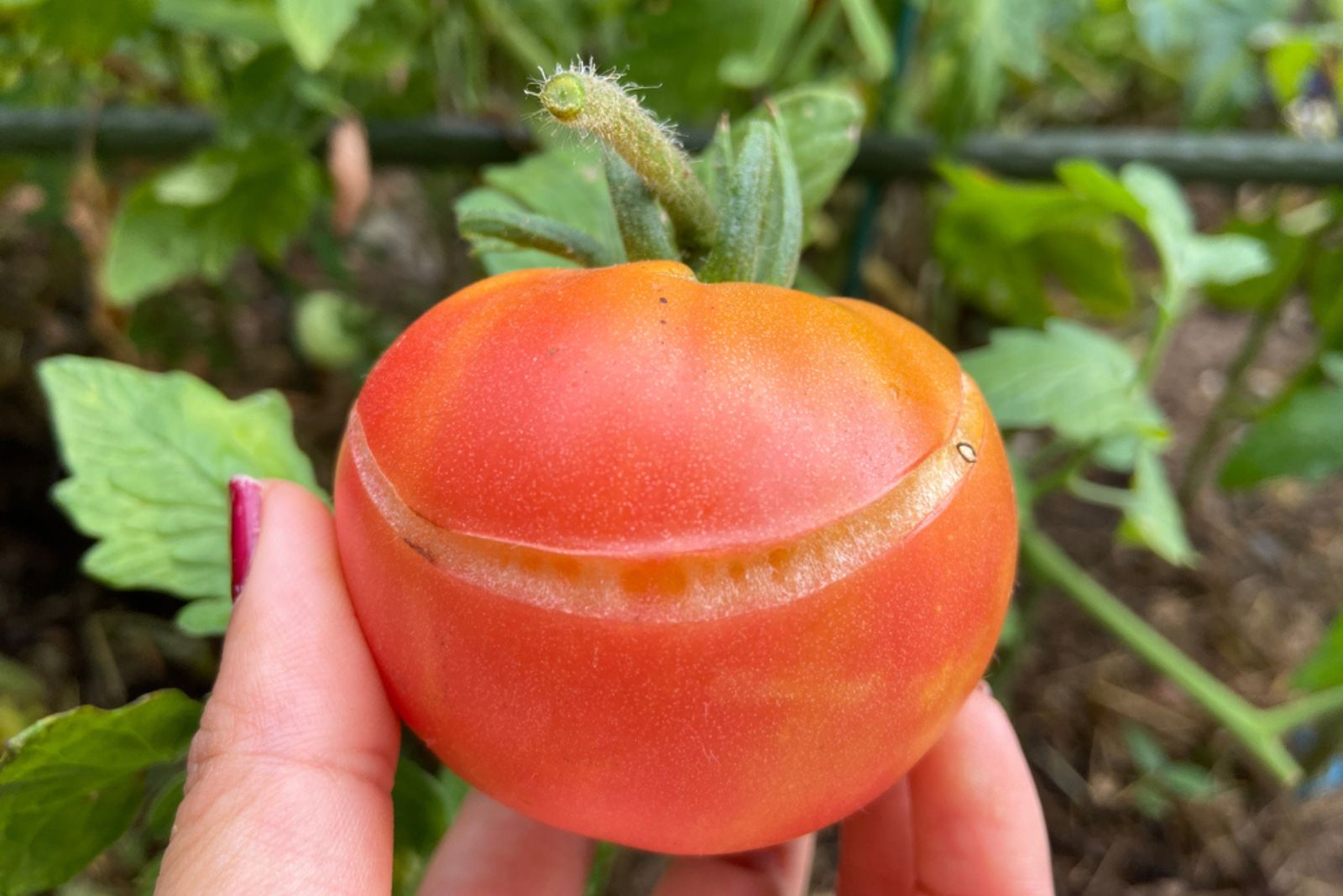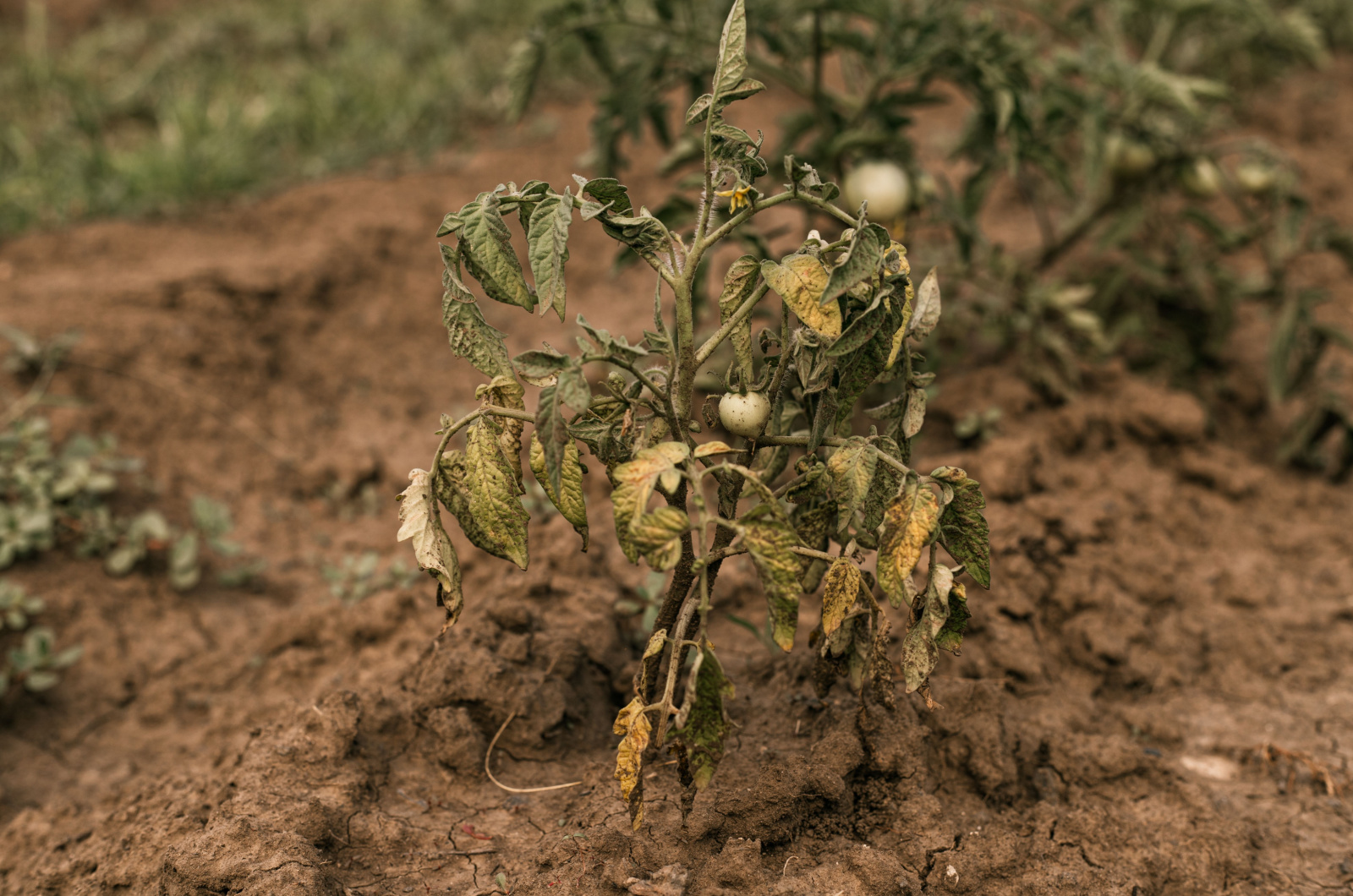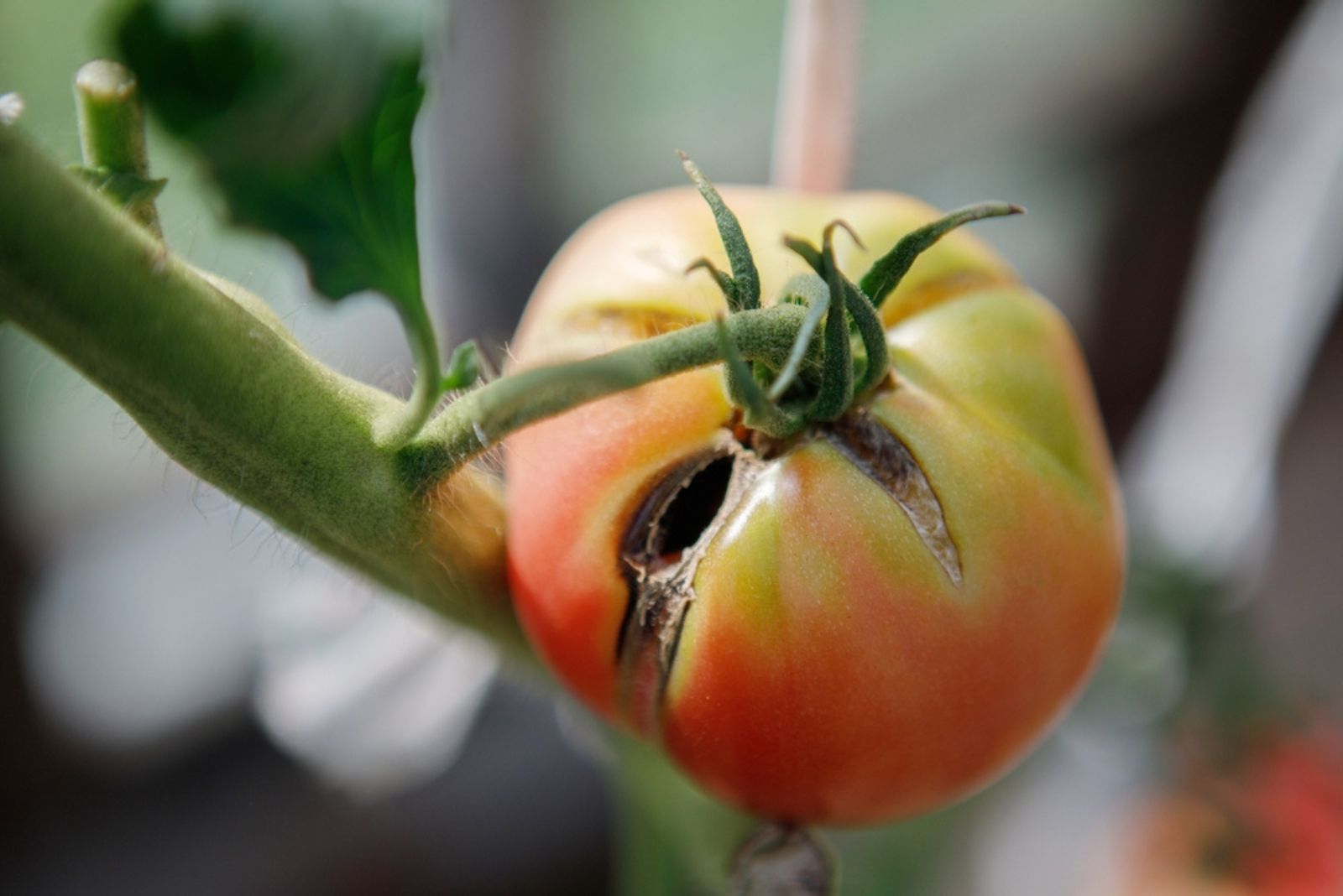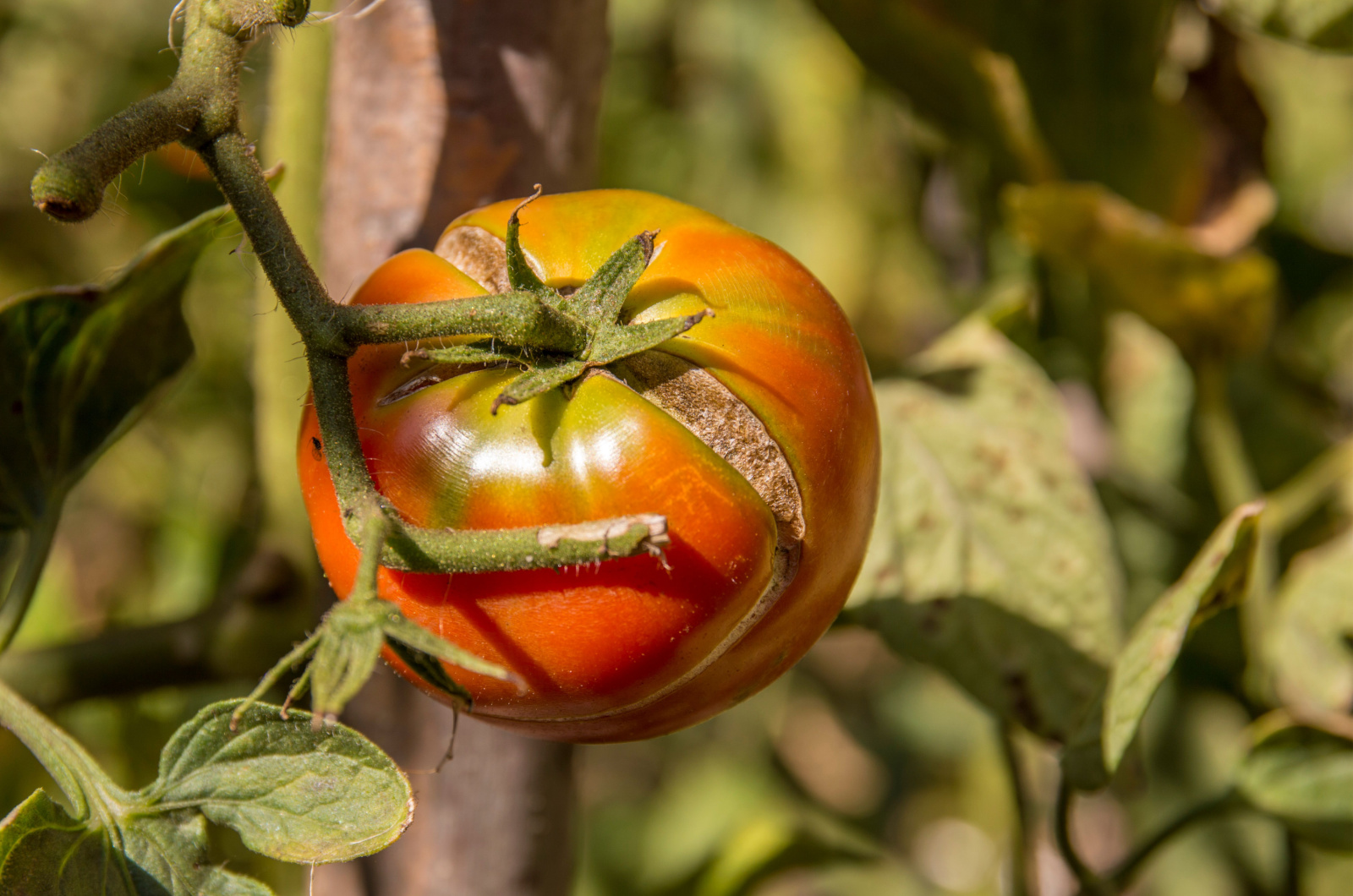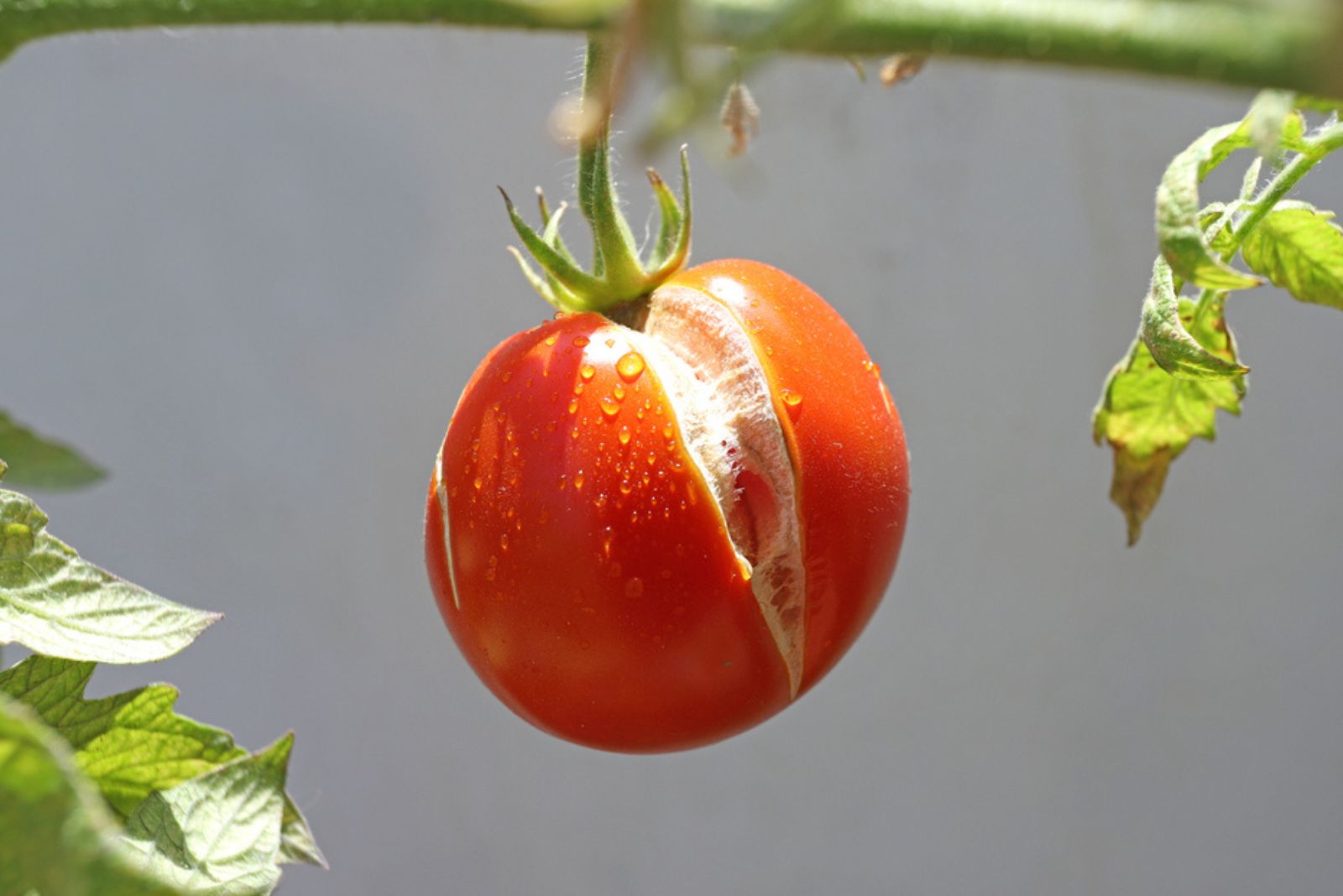Seeing red, juicy, and ripe tomatoes once you start your harvest is the best feeling ever! But seeing split and cracked tomatoes is definitely the worst!
I mean, you can still eat them but something about their appearance simply makes gardeners sad because they tried so hard and spent a lot of time inspecting and maintaining these delicious veggies.
That’s why I decided to show you some of the reasons your tomatoes are splitting so that you don’t repeat the same mistakes ever again!
Let’s get started!
Types Of Cracking
Before I move on to the reasons, I will tell you more about 2 types of cracking in tomatoes. The first one is vertical cracking and it refers to the splits that extend from the bottom to the top of the tomato fruits.
The second type is concentric cracking, which typically occurs on the top stems of the two most common varieties: heirloom and beefsteak tomatoes.
Fruit susceptibility to diseases, pests, and rotting is high in both types of cracking.
Interestingly, you’ll frequently see tomatoes with concentric cracking on the shelves of supermarkets. They look ‘more attractive’ than tomatoes with vertical splits. That’s why farmers aren’t too concerned if this happens to their fruit.
Generally speaking, tomatoes, no matter which type of cracks they have, are edible. However, this refers to those fruits that don’t show any signs of disease or rotting and are pest-free.
The biggest drawback of cracked tomato fruits is that they don’t last long, no matter how you store them.
Now, let’s see the causes of this deformation!
1. Uneven Watering
The most frequent cause of cracking in tomato plants is uneven watering. What does this mean? Well, tomatoes struggle to survive in overly dry or overly wet conditions and they don’t tolerate daytime and nighttime temperature fluctuations very well.
If your tomatoes lack water for a long period and then there’s sudden rainfall or you decide to give them a good soak, the fruits will be in shock. The skin of the ripe fruits will most likely crack as a response.
One thing is certain, you can’t revert them, but what you can do is prevent this from happening. The secret of a perfect tomato watering schedule lies in regular soil moisture inspection and keeping the soil consistently moist.
Put your finger in the soil or use a moisture meter to determine if your tomatoes need more water. Be careful and never add any water to your plants if the surface of the soil is still wet.
Adding more organic matter to the soil or applying mulch will help it stay hydrated for longer.
2. Overwatering
These are indeed very thirsty plants, but it’s definitely possible to overwater them, especially before the harvest.
Your almost-ripe fruits will most likely split and you may cause even bigger problems, such as rotting and diseases.
When you add too much water to these fruits, their membranes swell and crack when they can’t hold more water.
Always check the soil before you water your tomatoes; it’s actually better to leave them on the drier side just before the harvest. If you’re picking the fruits every couple of days, don’t add water on the day of harvest.
3. Lack Of Calcium
Nutrient deficiency isn’t uncommon in plants and may cause severe issues if left untreated. In the case of split tomatoes, calcium is the most likely culprit, i.e., the lack of it.
The main problem with a lack of this mineral is that it can cause black lesions in tomatoes, which is the most common sign of blossom end rot. (1)
If levels of calcium in the soil are too low, your tomatoes are predestined to crack because it affects water uptake and the ripening stages.
This is why you need to pay close attention to fertilizing tomato plants. Make sure the fertilizer you choose contains an adequate ratio of macronutrients (2) and enough calcium and magnesium.
The fastest way to raise calcium levels in the soil is by applying a foliar spray of calcium solution; adding it approximately twice a week should suffice.
But if you want to permanently fix this issue, I highly recommend using organic calcium fertilizers. You can go with eggshells or oyster shells; both work just fine.
Simply add them to the tomato planting hole and witness the magic.
4. Poor Soil Drainage
Crops enjoy free-draining soils and tomatoes aren’t an exception. Too compact and heavy soils retain too much water and lead to various problems, one of which is splitting.
Plant roots must breathe! Poor air circulation inhibits water uptake and significantly increases plants’ susceptibility to diseases.
The main problem is that it’s really hard to enhance drainage once your tomatoes are fully established. Taking plants out of the soil isn’t an option.
All you can do at this point is loosen the soil around the plant base using a hoe and then apply a layer of compost.
Before planting tomatoes the next season, make sure to broadfork the soil and add compost, well-rotted manure, or peat moss. Again, don’t water your tomato plants if the soil surface is already wet.
If you have clay soil, avoid tilling it because it will make the soil even more compact and encourage water accumulation. The result will be even more cracked fruits.
5. Over-ripening
Picking completely ripe and juicy tomatoes is priceless, but what we often do is leave them too long on the vines and they over-ripen. This significantly increases susceptibility to cracking.
The more you delay harvesting, the more swollen the inner fruit gets. Sudden heavy rainfall or increased watering frequency may cause these fruits to quickly burst, leaving entry points for pests, such as tomato hornworms.
You may not like hearing this, but you should pick your tomatoes before they’re fully ripe. I mean, your goal is to eat whole fruits without any cracks.
I also recommend checking the forecast often during the harvesting season. If it says that there’s a possibility of heavy rain, you should harvest all the almost-ripe tomatoes.
Simply put them on your countertop near bananas and they’ll ripen in a matter of days.
6. Tomato Variety
Black Krim, Cherokee Purple, and other heirloom varieties taste heavenly but there’s one thing you should know about them: they’re more prone to splitting!
They generate large fruits and both vertical and concentric cracking can occur. This most frequently happens if the weather is too hot and there’s too much water in the soil.
If you want to avoid splitting, choose crack-resistant tomato varieties. Medium-sized tomatoes, such as Roma, and cherry tomatoes, such as Sun Gold are the best choices.
And remember, these are also the sweetest tomato varieties out there!
7. Too Much Sun Reaching The Fruits
This may surprise you, but tomatoes can split if they receive too much sun. I know, I know, these are sun-loving plants but there’s one thing you should bear in mind.
Fruits are protected from the sun by foliage and if you prune your tomatoes too much, the sun will reach the fruits more than it should. This will lead to sunscald (3), which results in discoloration and uneven ripening.
Unfortunately, your tomatoes are doomed to crack in this case. You should either pick them before they’re ripe or protect them from the sun by using a shade cloth.
When planting tomatoes next season, make sure not to remove too much foliage.
The Bottom Line
Well, there are many reasons why tomatoes split. But don’t let this discourage you from growing these delicious fruits.
Simply follow our guidelines and you’ll get the best tomato harvest so far and yes, the fruits will be crack-free!
References
1. Little, E. L. (n.d.). Blossom-End rot and calcium Nutrition of pepper and tomato. UGA Cooperative Extension. https://extension.uga.edu/publications/detail.html?number=C938&title=blossom-end-rot-and-calcium-nutrition-of-pepper-and-tomato#:~:text=Blossom%2Dend%20rot%20occurs%20when,the%20blossom%20end%20of%20fruit.
2. Zewide, Isreal & Reta, Yonas. (2021). Review on the role of soil macronutrient (NPK) on the improvement and yield and quality of agronomic crops. Journal of Agriculture and Food Research.
3. Sunscald of Vegetables | University of Maryland Extension. (n.d.). University of Maryland Extension. https://extension.umd.edu/resource/sunscald-vegetables

